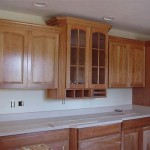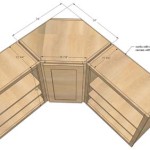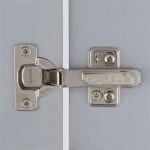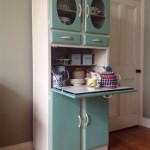Pretty Kitchen Cupboard Handles And Knobs: A Guide to Stylish Functionality
Kitchen cupboard handles and knobs are small, often overlooked components, yet they significantly impact the overall aesthetic and functionality of a kitchen. Choosing the right hardware can transform the look of cabinets, complementing the style of the kitchen and enhancing its usability. This article will explore the diverse range of options available, considering factors such as style, material, finish, and practical considerations to help homeowners make informed decisions.
Understanding the Importance of Handles and Knobs
Handles and knobs are more than just decorative elements; they are integral to the functionality of kitchen cabinets. They provide a point of contact for opening and closing doors and drawers, requiring a comfortable grip and durable construction. The size and shape of the hardware influence the ease of use, particularly for individuals with limited dexterity or mobility issues. Therefore, selecting handles and knobs involves a careful balance between visual appeal and ergonomic design. A handle that looks stunning but is difficult to grip will ultimately detract from the kitchen experience. Similarly, a knob that is too small or too slippery can be frustrating to use. Considering these practical aspects ensures that the chosen hardware not only enhances the kitchen's beauty but also its usability.
The style of handles and knobs can dramatically alter the perception of a kitchen's design. For example, sleek, modern handles can reinforce a contemporary aesthetic, while ornate, antique-style knobs can contribute to a traditional or vintage feel. The selection process should align with the overall design theme, paying attention to how the hardware complements other elements such as countertops, backsplash, and appliances. The color and finish of the handles and knobs should also coordinate with the kitchen's color palette to create a cohesive and harmonious look. Mismatched or poorly chosen hardware can disrupt the visual flow and detract from the overall impact of the kitchen design.
Beyond aesthetics and functionality, the quality of handles and knobs is crucial for long-term durability. Inferior materials and construction can lead to premature wear and tear, requiring frequent replacements. Investing in high-quality hardware made from durable materials ensures longevity and resistance to the rigors of daily use. This is particularly important in a high-traffic area like the kitchen, where handles and knobs are subjected to constant handling and exposure to moisture and cleaning agents. Choosing hardware from reputable manufacturers with a proven track record of quality and reliability is a wise investment that can save money and hassle in the long run.
Exploring Different Styles of Handles and Knobs
The market offers a vast array of handle and knob styles, each catering to different design preferences and kitchen aesthetics. Understanding the characteristics of each style can help homeowners narrow down their options and choose hardware that best complements their kitchen design.
Traditional Handles and Knobs:
Traditional styles often feature ornate details, classic shapes, and finishes like antique brass, oil-rubbed bronze, or polished nickel. These handles and knobs are typically characterized by their intricate designs, such as floral motifs, scrollwork, or beaded edges. They evoke a sense of elegance and timelessness, making them suitable for kitchens with a classic or vintage design. Traditional knobs may be round, oval, or square, while handles often feature a curved or arched shape. The choice of finish can further enhance the traditional aesthetic, with darker finishes like oil-rubbed bronze adding a touch of warmth and sophistication, while brighter finishes like polished nickel providing a more refined and polished look.Modern Handles and Knobs:
Modern styles prioritize clean lines, minimalist designs, and sleek finishes like stainless steel, brushed nickel, or matte black. These handles and knobs are typically characterized by their simple geometric shapes, such as straight bars, cylindrical knobs, or square pulls. They align with the clean, uncluttered aesthetic of modern kitchens, creating a sense of sophistication and functionality. Modern handles and knobs often feature a minimalist design, with no extraneous details or embellishments. They are designed to seamlessly integrate into the overall design of the kitchen, providing a subtle yet stylish accent. The choice of finish can also contribute to the modern aesthetic, with stainless steel and brushed nickel offering a sleek and contemporary look, while matte black providing a bold and sophisticated contrast.Transitional Handles and Knobs:
Transitional styles blend elements of both traditional and modern designs, offering a versatile option that complements a wide range of kitchen aesthetics. These handles and knobs may feature a combination of clean lines and subtle details, with finishes like satin nickel, chrome, or pewter. They bridge the gap between traditional and modern styles, creating a balanced and harmonious look. Transitional knobs may feature a slightly rounded shape with a subtle decorative detail, while handles often feature a simple yet elegant design. The choice of finish can also contribute to the transitional aesthetic, with satin nickel and chrome offering a versatile and timeless look, while pewter providing a more understated and sophisticated finish.Novelty Handles and Knobs:
Novelty styles encompass a wide range of unique and unconventional designs, often featuring whimsical shapes, vibrant colors, or thematic motifs. These handles and knobs can add a touch of personality and individuality to a kitchen, reflecting the homeowner's personal style and interests. Novelty knobs may be shaped like animals, fruits, or geometric patterns, while handles may feature unconventional materials or designs. These styles are often used in children's kitchens or to add a playful touch to a more traditional kitchen design. The choice of color and material can further enhance the novelty aesthetic, with bright colors and unconventional materials adding a sense of fun and whimsy.Material and Finish Considerations
The choice of material and finish is paramount in determining the durability, appearance, and overall aesthetic of kitchen cupboard handles and knobs. Different materials offer varying levels of resistance to wear and tear, while different finishes can significantly impact the visual appeal and style of the hardware.
Metal Handles and Knobs:
Metal is a popular choice for kitchen hardware due to its durability, strength, and versatility. Common metal options include: *Stainless Steel:
Known for its corrosion resistance and sleek appearance, stainless steel is a popular choice for modern kitchens. It is easy to clean and maintain, making it a practical option for high-traffic areas. *Brass:
Brass offers a warm, classic look and is available in a variety of finishes, including polished brass, antique brass, and oil-rubbed bronze. It is a durable material that can withstand daily use and is often used in traditional or transitional kitchens. *Nickel:
Nickel provides a softer, more subtle look compared to stainless steel, with finishes like brushed nickel and polished nickel. It is a durable and corrosion-resistant material that is well-suited for both modern and traditional kitchens. *Bronze:
Bronze offers a rich, warm color and is often used in traditional or rustic kitchens. It is a durable material that can withstand daily use and is available in a variety of finishes, including oil-rubbed bronze and antique bronze. *Zinc:
Zinc is a cost-effective option that is often used in budget-friendly kitchens. It is a durable material that can be plated with various finishes to mimic the look of more expensive metals.Wood Handles and Knobs:
Wood handles and knobs offer a natural, warm aesthetic and are often used in traditional or rustic kitchens. They can be made from a variety of wood species, including maple, oak, cherry, and walnut. Wood handles and knobs can be stained or painted to match the color of the cabinets, creating a cohesive and harmonious look. However, wood is more susceptible to moisture damage and wear and tear compared to metal, requiring more frequent maintenance.Ceramic Handles and Knobs:
Ceramic handles and knobs offer a decorative, elegant look and are often used in traditional or vintage kitchens. They can be painted with intricate designs or patterns, adding a touch of personality and individuality to the kitchen. Ceramic handles and knobs are relatively durable but can be prone to chipping or cracking if subjected to impact.Glass Handles and Knobs:
Glass handles and knobs offer a sophisticated, contemporary look and are often used in modern or transitional kitchens. They can be clear, frosted, or colored, adding a touch of elegance and visual interest to the cabinets. Glass handles and knobs are relatively fragile and can be prone to breaking if subjected to impact.The finish of handles and knobs can significantly impact their appearance and style. Common finishes include: *
Polished:
Polished finishes offer a shiny, reflective surface that adds a touch of elegance and sophistication. They are easy to clean and maintain but can be prone to showing fingerprints and smudges. *Brushed:
Brushed finishes offer a matte, textured surface that is less prone to showing fingerprints and smudges. They provide a more subtle and understated look compared to polished finishes. *Antique:
Antique finishes offer a weathered, aged look that adds a touch of character and charm. They are often used in traditional or rustic kitchens to create a vintage feel. *Matte:
Matte finishes offer a non-reflective, smooth surface that is less prone to showing fingerprints and smudges. They provide a modern and understated look that is well-suited for contemporary kitchens.Selecting the appropriate material and finish requires considering the overall style of the kitchen, the durability requirements, and the desired aesthetic. Investing in high-quality materials and finishes ensures that the handles and knobs will withstand daily use and maintain their appearance for years to come.
The size and spacing of handles and knobs are essential considerations for both functionality and aesthetics. A handle or knob that is too small can be difficult to grip, while one that is too large can overwhelm the cabinet. The spacing between multiple handles on a larger drawer or door should be consistent to create a balanced and harmonious look.

Cabinet Pulls Handles Solid Brass Gold Pull Handle Knob T Bar Round Copper Knobs Dresser Drawer Kitchen Cupboard Furniture Hardware White Cabinets

Best Kitchen Cabinet Hardware 2024

Brushed Brass Cupboard Handles Knobs Kitchen Minimal Cabinets Door Cup Pulls Drawer Shaker Style Gold Pull Bin

How To Choose The Ideal Kitchen Cabinet Handles

Learn How To Place Kitchen Cabinet Knobs And Pulls Cliqstudios

Hexagon Solid Brass Kitchen Cabinet Knobs And Handles Gold Bar Drawer Dresser Pulls Wardrobe Cupboard Closet Door Hardware Modern

Modket Brushed Nickel Modern Kitchen Cabinet Handles Pulls Knobs Hardware Bathroom Drawer Dresser Stainless Steel And

How To Install Cabinet Handles Ultimate Stress Free Tips

Cabinet Pulls Handles Knobs Square Solid Brass Satin Gold Copper Dresser Drawer Kitchen Cupboard Pull Handle Knob T Bar Furniture Hardware

Kitchen Cabinet Handles And Knobs Capricoast Blog
Related Posts








